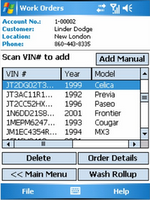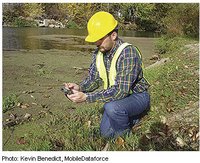
MobileDataforce has become experts and authorities on the subject of mobile handheld computer solutions for the automotive industry over the last 2 years. In the past few months alone we have been contacted and contracted by numerous companies seeking our expertise to develop customized mobile solutions for the following solutions:
- Vehicle lease returns for commercial companies
- Vehicle lease returns for the military
- Mobile automobile repair services
- Automobile detailing and appearance work
- Mobile autobody repair shops
- Mobile bumper repair and replacement
- Mobile headlamp restoration businesses
- Mobile windshield repair
Let's discuss just one of these areas in this blog article - Automobile lease returns. What is required in these solutions?
- Barcode scanning of VINs (vehicle identification numbers) to uniquely identify the returned vehicles. The VIN is often found on the door jam or the dashboard. The handheld computer must be able to barcode scan these numbers, identify the vehicle and store the information on a mobile database on the handheld computer. The screen shot above shows a list of scanned VIN codes that were decoded and saved to a automobile inspection application that MobileDataforce designed, delivered and deployed.
- Database query using the VIN. The VIN is used to query the mobile database application on the handheld so the appropriate inspection questions for the appropriate make and model of automobile can be displayed and answered. I wrote more on how to develop customized inspection questions based upon collected data in this recent blog article.
- The handheld inspection application is used to identify any damage and maintenance work required to restore the vehicle to resale condition.
- The damage and repairs can be be added up on the handheld computer and the estimated costs can also be computed on the handheld.
- The completed inspections and repair estimates are then synchronized with a central database for all returned vehicles.
All of the automotive software applications MobileDataforce has designed and developed take advantage of the technology in the PointSync Mobility Software Platform.






